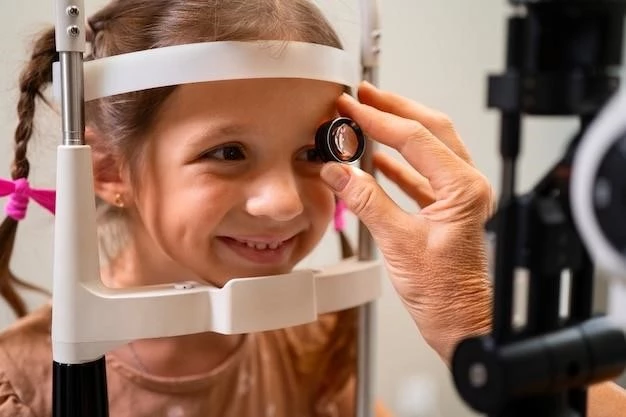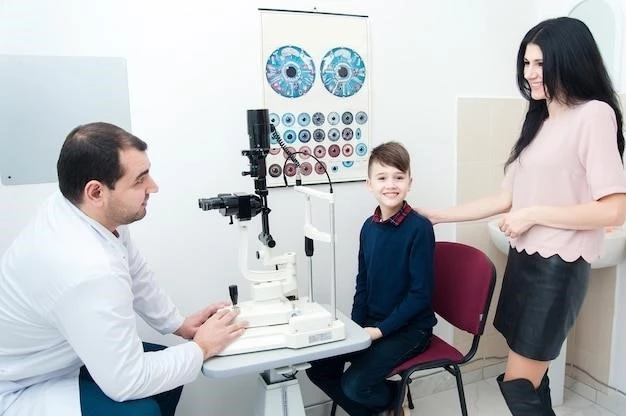Introduction
Microphthalmos, microcornea, and sclerocornea are rare eye conditions that can impact vision and ocular health․ Understanding the characteristics, causes, and treatment options for these conditions is crucial for appropriate management and care․
Overview of Microphthalmos, Microcornea, and Sclerocornea
The overview of microphthalmos, microcornea, and sclerocornea provides insights into rare eye conditions affecting vision and ocular health․ These conditions involve abnormalities in eye size, corneal diameter, and corneal opacity․ Understanding the different characteristics, causes, and differential diagnoses is crucial for accurate diagnosis and appropriate management strategies․
Microphthalmos refers to abnormally small eyes, while microcornea is characterized by decreased corneal size․ Sclerocornea involves corneal opacification and vascularization․ These conditions can present independently or in combination, requiring thorough evaluation and treatment planning․
Recognition of associated ocular abnormalities, such as coloboma, corneal malformations, and lens defects, is essential for a comprehensive approach to care․ Differential diagnoses like nanophthalmos and anterior microphthalmos must be considered to differentiate between similar conditions․
Through accurate diagnostic methods and comprehensive evaluation, healthcare professionals can devise appropriate therapeutic options for patients with these rare eye conditions․ Long-term care and follow-up strategies are crucial to monitor eye health, ensure visual acuity, and address any potential complications effectively․
Understanding Microphthalmos
Microphthalmos, often diagnosed in infancy, refers to abnormally small eyes due to underdevelopment․ The condition may lead to vision impairment and other ocular abnormalities․ Early detection and intervention are essential for proper management․
Definition and Characteristics
Microphthalmos is a condition characterized by abnormally small eyes, often associated with vision impairment and other ocular abnormalities․ Microcornea, on the other hand, refers to a decreased corneal size, which may occur independently or in combination with microphthalmos․ Sclerocornea involves corneal opacity and vascularization, impacting visual health․ These conditions require accurate diagnosis and appropriate management to address visual challenges effectively․ Differential diagnoses such as cornea plana, sclerocornea, nanophthalmos, and anterior microphthalmos must be considered to provide tailored care for patients․
Classification of Microphthalmos
Microphthalmos is classified into simple, where only the eye size is affected, and complex types that involve additional ocular abnormalities like coloboma or microcornea․ Understanding the classification aids in accurate diagnosis and tailored treatment plans for patients with these conditions․

Insight into Microcornea
Exploring microcornea, characterized by a decreased corneal size, provides valuable insights into rare eye conditions․ Understanding the relationship between microcornea and other ocular abnormalities like microphthalmos is essential for accurate diagnosis and tailored treatment approaches․
Defining Microcornea and its Features
Microcornea is characterized by a reduced corneal size, impacting visual health․ It may present independently or in conjunction with microphthalmos, necessitating accurate diagnosis and tailored treatment strategies․ Understanding the features of microcornea is crucial in providing comprehensive care for individuals with this rare eye condition․
Relationship Between Microcornea and Microphthalmos
The relationship between microcornea and microphthalmos involves the presence of a small cornea alongside abnormally small eyes, impacting visual health․ Understanding this association is crucial for accurate diagnosis and treatment planning to address the unique challenges presented by these rare eye conditions․

Exploring Sclerocornea
Sclerocornea is a rare ocular condition characterized by corneal opacity and vascularization․ Understanding the unique features and potential associations with other ocular abnormalities is crucial for effective diagnosis and personalized treatment strategies․
Characteristics and Causes of Sclerocornea
Sclerocornea is characterized by corneal opacity and vascularization, often affecting both eyes․ The condition can present with varied severity, ranging from peripheral to total corneal involvement․ While the exact etiology is not fully understood, sclerocornea is considered a congenital non-progressive condition with no known inflammatory or infectious associations․ It may be accompanied by systemic conditions like intellectual disability and craniofacial abnormalities․ Differential diagnosis should consider other ocular anomalies like Peters anomaly, coloboma, microcornea, and anterior microphthalmos to provide accurate management․
Association of Sclerocornea with Other Ocular Abnormalities
Sclerocornea, characterized by corneal opacity and vascularization, can be associated with other ocular anomalies such as microcornea, microphthalmos, anterior segment dysgenesis, and coloboma․ Understanding these associations is crucial in accurate diagnosis and individualized management of patients with these complex ocular conditions․
Diagnosis and Differential Diagnosis
Diagnosing microphthalmos, microcornea, and sclerocornea involves differentiating these rare eye conditions from others like cornea plana, nanophthalmos, and anterior microphthalmos․ Understanding the distinct features and diagnostic methods is crucial for accurate identification and tailored management․
Diagnostic Methods for Microphthalmos, Microcornea, and Sclerocornea
Diagnosing microphthalmos, microcornea, and sclerocornea involves a comprehensive evaluation utilizing various imaging techniques such as ultrasound, optical coherence tomography, and corneal topography․ Additionally, genetic testing and clinical examination play a crucial role in determining the underlying causes and associated abnormalities in these rare eye conditions․ Collaborating with ophthalmologists specializing in pediatric ophthalmology and genetics can provide valuable insights for accurate diagnosis and appropriate management strategies tailored to each patient’s unique needs․
Distinguishing Between Cornea Plana, Nanophthalmos, and Anterior Microphthalmos
Based on the information found on the internet, sclerocornea refers to a noninflammatory condition involving the cornea’s opacification and vascularization․ This rare condition may affect the entire cornea or just its periphery and is often associated with systemic conditions like mental retardation and craniofacial abnormalities․ Differential diagnosis should involve distinguishing it from cornea plana and other ocular anomalies like microcornea․ Proper identification and understanding of the characteristics of sclerocornea are essential for accurate diagnosis and customized management strategies tailored to individual patient needs․
Treatment and Management
Therapeutic options for microphthalmos, microcornea, and sclerocornea vary based on individual cases, ranging from corrective lenses and visual aids to surgical interventions like corneal transplants or ocular reconstruction․ Long-term care and regular follow-up consultations with ophthalmologists are vital to monitor progress and ensure optimal eye health․
Therapeutic Options for Patients with Microphthalmos, Microcornea, and Sclerocornea
Treatment for microphthalmos, microcornea, and sclerocornea may involve corrective lenses, visual aids, surgical interventions like corneal transplants, or ocular reconstruction depending on the individual’s condition․ Collaborating with ophthalmologists and specialists is crucial for effective management․
Long-term Care and Follow-up Strategies
Long-term care for individuals with microphthalmos, microcornea, and sclerocornea involves regular follow-up consultations with healthcare providers specializing in eye conditions․ Monitoring visual health, adjusting therapeutic interventions as needed, and addressing any emerging concerns promptly are essential for maintaining optimal eye function and overall well-being․
